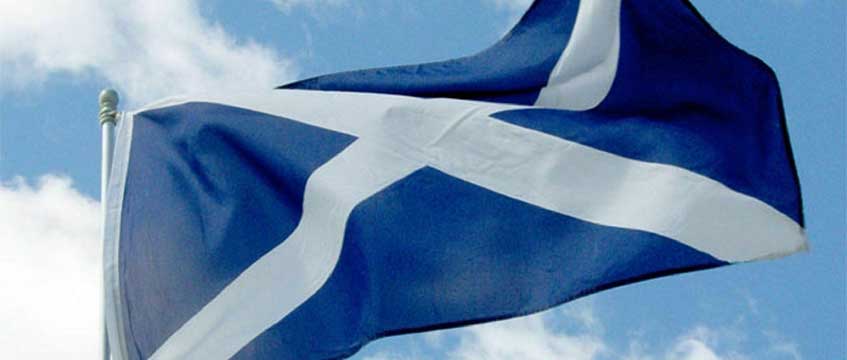As HM Treasury estimates around £7bn of accrued business rent arrears across the UK since the start of the pandemic, landlords are now seeking legal guidance to initiate the recovery of outstanding sums.
In England and Wales, the lifting of the two-year lease forfeiture moratorium for non-payment of rent (as introduced by the Coronavirus Act 2020) coincided with the enactment of the Commercial Rent (Coronavirus) Act 2022 which – alongside the new Code of Practice for commercial property relationships following the Covid-19 pandemic – provides a binding arbitration process for the resolution of outstanding rental disputes in the absence of agreement.
The legal landscape in Scotland is, however, somewhat different.
Legislative approach to Covid-19 arrears in Scotland as compared with England
Under the Coronavirus (Scotland) Act 2020, tenants were afforded certain enhanced protections in respect of the landlord’s ability to terminate a lease on the basis of monetary arrears, but the legislation stopped short of creating a moratorium on irritancy (the Scottish equivalent of lease forfeiture).
In the absence of more prescriptive legislative intervention, and a reduced demand for commercial business premises, landlords and tenants in Scotland were encouraged to adopt a more pragmatic, collaborative approach to negotiations in an attempt to resolve the issue of rent arrears. For example, side agreements for rent postponements or rent-free periods agreed in return for lengthier lease terms.
This bespoke, market-driven approach also avoided situations where tenants who could continue to meet their financial obligations might seek to take advantage of an irritancy moratorium to delay payment – thus adding to the volume of debt and ill-feeling in those landlord/tenant relationships.
It has yet to be seen whether the legislative approach adopted in Scotland has resulted in any less accumulated debt as compared with tenants in England and Wales. What has, however, become clear is that many England-based landlords and landlords with a property portfolio which straddles the border with Scotland are unaware of the key differences between the legislative measures invoked in the respective countries – and particularly that neither the 2022 Act nor the new Code of Practice will have any substantive impact in Scotland.
The key differences between lease-related debt enforcement actions in Scotland and England are:
- Notwithstanding the Coronavirus (Scotland) Act 2020, landlords under Scottish leases retained debt enforcement options – no moratorium was ever effected in Scotland;
- There is no “ringfencing” of pandemic arrears in Scotland – all rents and other sums due under a lease (whether Covid-19-related or otherwise) remain payable by the tenant; and
- There are no “pre-action protocols” specific to rent arrears required by Scots law prior to commencing enforcement proceedings.
Options for enforcement of lease debts in Scotland
On 1 April 2022, Scotland returned to the pre-pandemic lease irritancy provisions and, with that, we anticipate a significant increase in instruction from landlords seeking to clarify the options available to them for enforcing tenant obligations under a lease (particularly around rent arrears accrued as a result of Covid-19 restrictions). The main debt recovery options available to commercial landlords in Scotland are:
- Irritancy: Termination of a lease and recovery of possession of the premises following on from a breach of the lease terms (including rent arrears). The landlord must provide notice of the breach and afford the tenant 14 days to rectify the breach prior to irritating the lease. A court order for removal of a tenant can then be obtained and enforced by sheriff officers (including taking possession of the property by gaining access via force/changing locks).
- Summary diligence: If a lease contains a clause consenting to “registration for preservation and execution” and has been registered in the Books of Council and Session, the extract lease can be used to carry out diligence against the tenant without the requirement for court proceedings. Diligence options include:
(i) Statutory demand: a formal written demand for payment served on the tenant and confirming that the tenant has 14 days from the date of service to make payment. In the event of a failure to pay the landlord can take further steps to recover the sums due (see diligence options below).
(ii) Arrestment: a bank arrestment is the most common form of arrestment and is used to secure monies held in a tenant’s bank account.
(iii) Attachment: it is possible to “attach” goods or equipment belonging to a tenant. If the outstanding debt is not settled, the attached items may be sold and the proceeds used to clear the sums outstanding.
(iv) Inhibition: if a tenant owns a property in Scotland, the grant of an inhibition can be used to prevent them transferring such property or granting security over it until such time as the debt is settled.
(v) Winding up/liquidation: A petition for the winding up of a tenant company may be presented if arrears are not cleared following the service of a statutory demand.
(vi) Court action: If summary diligence is not available, court action for payment of rent arrears can always be pursued (and then enforced through the same types of diligence).
If a landlord with property in Scotland is in any doubt around the debt recovery options available to them following the relaxation of Covid-19 legislative restrictions, they should, of course, seek legal advice.
Edward Gratwick is a legal director and solicitor advocate in the commercial disputes team at Addleshaw Goddard, and Craig Falconer is an associate in the firm’s restructuring team











